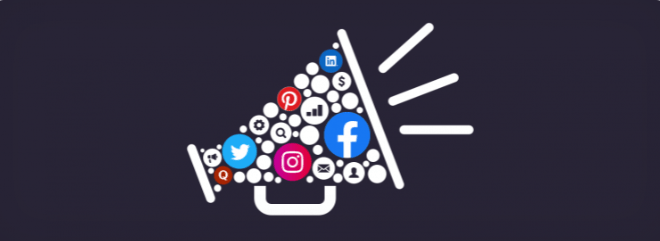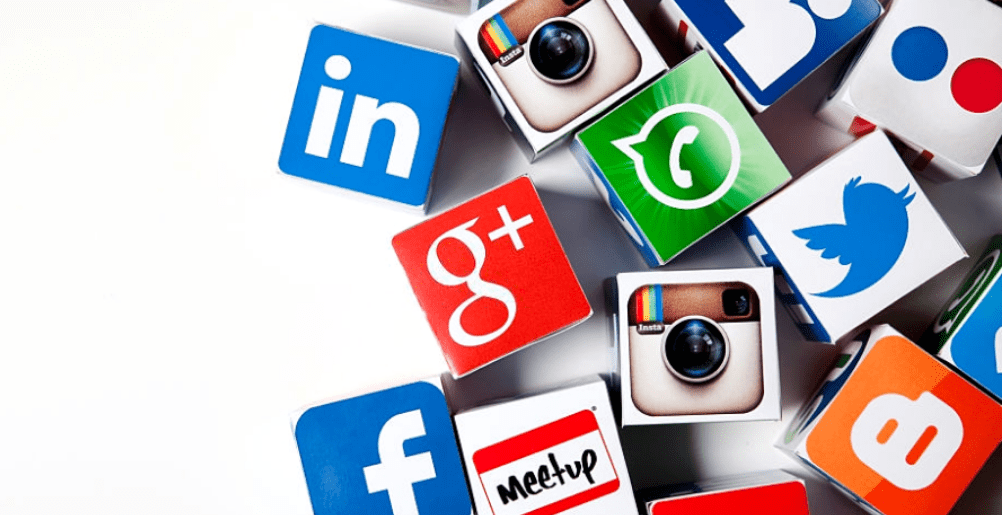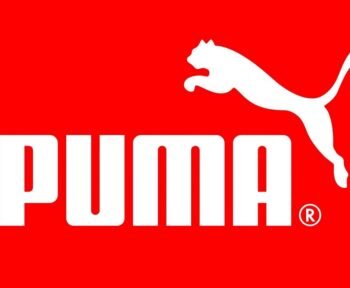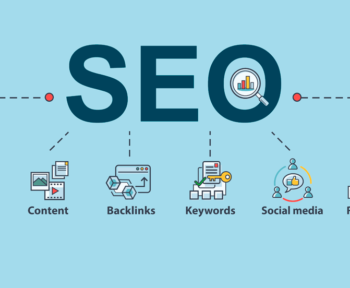For many, it has become commonplace to share on Facebook & to tweet on Twitter, hashtag Instagram captions, and send invitations to Facebook events.
(Actually, if you are highly experienced, you can probably do all three at once.)
But new social media networks and innovative software are coming in almost every day, even experienced social media users “***?”
Table of Contents
Important Social media marketing terms that You should know
To avoid head-scratching moments, we have created the ultimate glossary of important social media marketing terms that You should know. So without any further delay, let’s begin.
A/B test
The A/B test, also known as split testing, measures two social media posts to see what works best. The most common way to use A / B tests is to change only one element in the post between the two versions (title, image, CTA, etc.) so that you know if there is any difference in performance due to that change. You can take the A/B test with both Organic and Paid Post.
Ads Manager
Ads Manager Facebook’s tool for creating, executing, and analyzing social ads. It can manage your advertising campaigns on Facebook, Instagram, or the audience network. It also offers a wide range of features for ad targeting, budgeting, and optimization.
Analytics
Analytics is the way you understand data and find patterns. In the context of social media, analysis is the process of following metrics on your social media performance and using that data to improve your strategy. For example, looking at your engagement rate over time is one way to use social analytics to see if your posts are more or less compelling to your followers.
For more in-depth information about social analytics, see the Instagram Analytics described.
Application Programming Interface (API)
An API is a set of building blocks used by programmers to develop computer programs. When it comes to social media, all major social networks have their own APIs that allow programmers working with the network to create their own software. Third-party social media tools such as Falcon rely on social media APIs to integrate with platforms such as Facebook.
Algorithm
In general, an algorithm is a set of rules used to solve a problem. However, in social media terminology, people often use ‘algorithm’ as a shorthand for ‘feed algorithm’, which is a set of rules that automatically determine who the social network is. post comes first in your feed. For example, if Facebook decides to prioritize posts with too many comments (as it did with recent algorithm changes), it can use its feed algorithm to forward those posts. Adjusts the rules.

Average response time
Average response time is a social customer service metric. This is an average time to respond to a brand’s questions or complaints on social media. Consumer expectations of social customer support response times have become more demanding in recent years, with 42% of customers now expecting a response within 60 minutes.
The Audience
Your audience on social media is the group of people you can reach with your content. This includes your followers and anyone who sees or interacts with your posts in their feed. Growing your social media audience is one of the best ways to spread brand awareness.
Avatar
Your social media avatar, also known as your profile picture, is a small image that represents you on a social network. It could be your real image, corporate logo or anything your followers want to socially identify as ‘you’.
Bio
Your social media bio is a brief description of your profile that lets people know who you are. This is a great place to share links to your website or other accounts. On Facebook, Instagram, and Twitter it is simply called Bio, on LinkedIn, it is called Summary. Airbnb’s Instagram bio provides an example that illustrates your brand when plugging in major hashtags and landing pages:
Business to Business (B2B)
A B2B business sells products or services to other businesses, such as a consulting firm or business software company. On social media, B2B brands often seek to establish themselves as thought leaders in their industries and provide professional advice to their business counterparts.
Business to Consumer (B2C)
B2C Business deals directly with customers such as hotels or retail stores. In social media marketing, B2C companies often focus on building a community around their brand and providing excellent social customer service.
Brand awareness
Brand awareness is the level of contact that customers have with your brand. This is often considered one of the main goals of social media marketing. This is one of the goals you can choose for your Facebook and Instagram ad campaigns in Ads Manager. Brand perception can be measured more accurately by Impressions or Reach or by Ad Recall Lift (estimate how many users will remember your brand after seeing the ad).
Business Manager
Facebook Business Manager is software that helps companies manage their pages, advertising accounts, and team members. It serves as a hub for connecting advertising, finance, customers, and pages and allows easy administration. This ensures that company data and account access is legally and practically controlled by the company rather than the individual consumer.
Brand Advocate
A brand advocate on social media is a customer who posts positive messages, leaves positive reviews, or supports your brand on social media. Brand Advocates may encourage other customers to use your products or services through verbal marketing.

Clickbait
Clickbait is content that uses a manipulated copy to persuade users to click on the content. it is based on exaggeration and disables information to prompt people to click. For example, an article titled “Doctors hate him for using this weird trick …”,
but when you tell him to work regularly it is considered clickbait because it makes people laugh. This will force you to click to learn more while minimizing the actual content. Social networks such as Facebook treat clickbait as spammy and reduce their scope accordingly.
Conversion rate (CVR)
In social media terminology, the conversion rate is the percentage of users who view your post or ad, after which they take a specific action. That action is called conversion and means buying an item, signing up for a newsletter, downloading an ebook, or many other activities. While your social media marketing goal is to maximize conversions, your CVR is an important metric to evaluate how effective your post or ad is. Learn about CRO.
Click through Rate (CTR)
On social media, click-through rate means the percentage of people who view your post. What is considered a click and ‘view your post’ varies by the social network? On Facebook, CTR (Link Clicks/Post Impressions) x is equal to 100%.
For more information on social media advertising metrics such as CTR, CVR, and CPC.
Cost per mille (CPM)
The cost per mille is another social advertising metric. It indicates how much you pay for 1,000 impressions (‘mil’ means 1,000 in Latin). If your goal is to get your ad in front of as many people as possible and spread brand awareness, CPM is an important metric to follow. Like CPC, CPM varies based on your target choices and your ad quality.
Cost per click (CPC)
The cost per click is the social media advertising metric, which tells you how much you pay on average for each click on your ad. Your social media marketing goal is to drive traffic to a landing page or piece of content.
Low CPC means you get more traffic at a low cost, high CPC means you have to pay a lot for traffic. CPC may vary based on a number of factors, including who you are targeting with your ad, what locations you are targeting, and how relevant your ad is to your target audience.
Community Manager – The Community Manager is responsible for building and maintaining online communications for the business in an effort to grow the online community.
Connection
LinkedIn equivalent to Facebook ‘friend’ ‘Connection’. Since LinkedIn is a social networking site, the people you connect with are not necessarily your friends, but the professional contacts you have met, talked to, traded with, or anyone. Others know through connections. Connections are classified into first degree, second degree, and third degree.
Caption image
Your caption image or cover photo, the view you place at the top of your social media profile. Often in landscape format, header images are much larger than your profile picture/avatar and can be used to introduce you or your brand to your profile visitors. They can complete your profile picture, display your personality, or display the product or event you are promoting.

Emoji – Emoji are short cartoons that can be sent with text on social media and in private messages.
Endorsement – Acceptance on LinkedIn refers to the context in which another LinkedIn user recognizes you for one of the skills listed in your profile.
Engagement Rate – Engagement Rate is a popular social media metric used to describe the amount of interaction – likes, shares, comments – receiving a portion of content. It is difficult to compare engagement rates on social networks because what is considered “engagement” and “view your posts” on each network are different. “Viewing your posts” means Reach or Impressions, but “Engagement” includes Likes, Comments, Shares, Reactions, etc.
Eventbrite – Eventbrite is a provider of online event management and ticketing services. If your event is free then the event is Bright Free. If you sell tickets for your event, Event ్రైBright will charge a single ticket fee.
Feed
Feed on social media is a general term for the content stream you see from other users. On most social networks, the feed acts as a homepage and is the most common way for people to view posts and interact with them.
Follower
The follower is a user on social media who subscribes to see your posts in your feed. Both personal and business accounts may have followers. The number of followers is an important metric to see how your audience is growing or decreasing over time on social media.
Fear of missing out (FOMO)
Fomo is the acronym, the fear of missing out? On social media, FOMO is the feeling that users get when they see posts about events or opportunities they want to participate in. Social media marketers often use FOMO to their advantage and jump quickly to avoid losing users by providing special or limited time.
Forum – Also known as a message board, the forum is an online discussion site. It is a modern equivalent of the traditional bulletin board and a technological development of the dial-up bulletin board system.
Geo-Targeting.
Follow Friday (#ff) – Follow Friday is a trend on Twitter every Friday with the hashtag #ff. Users choose other usernames and tweet with #ff in their posts, which means they recommend following those Twitter users. There is a debate as to whether this trend has reached a maximum.
#FYP (for your page) – #FYP is a hashtag that Tik Tok users place on their videos to prioritize their content over other users’ “your page” feeds. This feed algorithmically sends content from people you follow or hashtags of interest to you.
In social media marketing, geotargeting is a technique that adjusts your advertising content based on user location. In the Facebook Ads Manager, users can be added or excluded from the target audience based on their region, country, state, city, postal code, or address. This means that advertisers can create and target ad sets to attract customers from a specific geographical location.

Hashtags
Hashtags (#) are a way to link your posts on social media to other posts on the same topic or trending topic. By searching for a specific hashtag, users can find all public posts that contain it. For example, users looking for content about the World Cup may find posts with #WorldCup or #FIFA. Social media marketers often follow the popularity of hashtags to see what is trending on social media.
Impression
Impressions are measured by the number of times your post has been shown in the user feed. Unlike Reach, you can count multiple effects if a user sees their post more than once. Every social network counts the impressions of a post differently on Facebook and Instagram.
Key Performance Indicators (KPIs)
A key performance indicator, or KPI, is a metric that you use to measure your progress towards business goals. In social media marketing, KPIs are the most important statistics to find out if you have reached the goals of your social strategy. For example, if your primary goal on social media is to raise brand awareness, post reach or ad recall growth may be your KPIs.
Listicle
The listicle is a list-based article. This type of content is often popular on social media due to its quick, easily digestible format. For example, an article like 21 Tips to Increase Instagram Engagement Extensively is considered a list due to its point-by-point breakdown.
Meme
The term ‘meme’ (rhyming with ‘team’) actually refers to any idea that is spreading virally, multiplying, and turning, but it is more specific in the case of social media. Memes on social media are funny text, videos, or images that go viral and allow users to have fun by creating their own variations and sharing them.
Brands often try to resort to the newest meme to connect with a younger audience, but it can backfire if it doesn’t get a joke and keep them out of touch.
Native ads
Native advertising on social media is a way for consumers to show paid content in an organic way. Promoted Facebook posts and promoted tweets are good examples of local ads because they look like standard posts in user feeds with an ad budget. A recent study found that users view local ads 53% more than display ads.
Newsjacking
Newsjacking is a technique for intercepting current events with your social media content. Social media managers often engage in newsjacking by linking their content to the conversation around timely and relevant key hashtags and the latest news. For example, during the 2013 Super Bowl power outage, millions of people across America followed, and Orio became very engaged with real-time tweets.

Reach
Reach is a social media metric that tells you how many people have viewed your posts. This means that even if users see your post many times, they will only come in person. Reach is an important metric to understand how many audiences your content has and to measure your progress in spreading brand awareness.
Relevance score
Relevance score is a metric available in Facebook Ads Manager, which measures how well your target audience responds to your ad on a scale of 1 to 10, based on a number of factors, including positive feedback such as score clicks or likes, and opposite feedback.
E.g. “I do not want to see this ad”, and users are choosing the overall ad performance. The higher your content score, the more relevant your ad will be to your target audience and the more ads you will be shown to your audience.
Retargeting
In social media advertising, retargeting is the technique of targeting ads on users who have previously interacted with your page or website. A social media marketer can click on a Facebook ad for a new boot, go to the checkout page, and then target a customer who has not completed the sale again. Retargeting with Facebook Pixel can be done by tracking user activity or uploading a list of past or potential customers to target.
Shareable Content
Content that users can share on social media is content that users share with their networks. Many factors affect what can be shared, including how useful, entertaining and persuasive the content is. Content that evokes strong feelings and reactions is also highly shared.
Social customer service
Social Customer Service (or Social Customer Service) is customer service through social media. This may include responding to customer inquiries, handling complaints, and providing assistance. A private messaging app is your best bet for social customer service in 2020, 70% of people now prefer the “Send us a message” button rather than the “Call us” button.
Social listening
Social Listening is how social media managers often track conversations around key topics, terms, brands, and more with a specialized software tool. Social Listening Software collects quotes, comments, hashtags, and related posts from social media to provide insight into what and how users are speaking. Brands often use this information to press key trends and see what people are saying about them and their competitors.
Social Media ROI
Social media ROI, or return on investment, is a measure of how much revenue your activities generate on social media rather than how much you spend on your company. Since the social media goals of many brands are more about brand awareness than leads or sales, it is very difficult to assess social media ROI. In short, the formula for calculating it is:
Social selling
Social Selling, simply put, is using social media to make sales. Often, this happens when marketers are socially interacting with potential customers, forcing them to interact with each other for future sales. This can be done by answering questions of opportunity, by sharing company content, or by specifying their brand in the post brand.
Trending topic
A trending topic is a topic that suddenly becomes popular on social media. Many social networks keep track of the top hashtags or topics that people are posting and also have a “Trending Topics Section”. On Twitter, this section is currently called “Trending for You” and has been personalized and localized, but there is an “Explore” section on Instagram that allows users to view trending-related content in their area.

User-Generated Content (UGC)
User-generated content or UGC is fan-generated content that promotes the brand. While UGC can come in the form of video, image, post, audio, review, article, etc., brands often rely on UGC to help users participate in their social media campaigns and build trust and credibility with their followers. For example, Toyota asked its audience to submit a video featuring street music as part of the Feeling the Street campaign.
Vanity metric
The vanity metric on social media is a statistic that may seem like a positive indicator of performance but doesn’t really give you valuable insight. Impressions are a classic example because they are often larger than they reach, but only tell people how many times people have scrolled through a post in their feed without saying how popular or engaging the post is.
Viral
Viral is a term used to describe rapidly spreading content on social media. This is because usually, a large number of people share content with their followers, their followers share the same content with their followers and create a snowball effect. Creating viral content is the holy grail of social media marketing because it means you get more viewers without spending a dime.
Social media buzzwords: Can’t live with them, can’t live without them
Learning social media vocabulary is like learning a new language. It may seem unfamiliar to many, but once you become proficient you will become a more effective communicator in the world of social media management.
While all of these key social media words and phrases seem overwhelming, they make it very easy to discuss and plan your social media strategy. Also, you need to know the social media terminology in order to have the hope of understanding Social media marketing terms. So don’t hesitate to hit up the books (or blog) and study!
Hope! You find this content informative. Don’t forget to share and leave Your comments. Thank You.






4 Comments
aussy
Nice awesome content really helpful
inamdurrani60
Thanks Aussy
Damian
You’ve made some really good points there. I checked on the web to learn more about the issue
and found most people will go along with your views on this website.